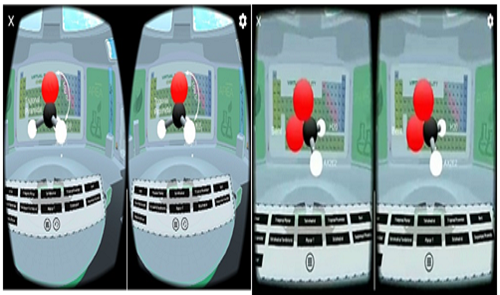
The Validity of Molecular Geometry Based Virtual Reality to Improve Student Visual-Spatial Intelligence in New Normal Era
Abstract
Keywords
Full Text:
PDFReferences
Abdillah, F., Riyana, C., & Alinawati, M. (2018). Pengaruh Penggunaan Media Virtual Reality Terhadap Kemampuan Analisis Siswa Pada Pembelajaran Ilmu Pengetahuan Alam Kelas VIII Sekolah Menengah Pertama. Educational Technologia, 2(1), 35-44.
Ahvan, Y. R., & Pour, H. Z. (2016). The Correlation of Multiple Intelligences for the Achievements of Secondary Students. Educational Research and Reviews, 11(4), 141-145.
Aji, R. H. S. (2020). Dampak Covid-19 pada Pendidikan di Indonesia: Sekolah, Keterampilan, dan Proses Pembelajaran. SALAM: Jurnal Sosial dan Budaya Syar-i, 7(5), 395-402.
American Library Association. (2017). Trends. [Online]:(http://www.ala.org/tools/future/trends).
Arsyad, Azhar. (2015). Media Pembelajaran. Jakarta: PT Raja Grafindo Persada.
Bento de Sa, F., Carvalho de Paiva, R., Souki, G., & Moura, L. (2017). Attributes Considered by Coffee Consumers During Their Buying Decision Process: A Study Using Factorial Analysis. Brasil. Universidade Federal de Lavras
Chittleborough, G. D., Treagust, D. F., & Mocerino, M. (2002). Constraints to the development of first year university chemistry students’ mental models of chemical phenomena. Focusing on the Student. 43–50.
Critten, V., Campbell, E., Farran, E., & Messer, D. (2018). Visual Perception, Visual-Spatial Cognition And Mathematics: Associations And Predictions In Children With Cerebral Palsy. Research in developmental disabilities, 80, 180-191.
Firman. (2020). Dampak Covid-19 terhadap Pembelajaran di perguruan tinggi. BIOMA, 2(1), pp.14-2.
Gerschütz, B., Fechter, M., Schleich, B., & Wartzack, S. (2019). A Review of Requirements and Approaches for Realistic Visual Perception in Virtual Reality. In Proceedings of the Design Society: International Conference on Engineering Design (Vol. 1, No. 1, pp. 1893-1902). Cambridge University Press.
Sukmawati, Wati. (2019). Analisis Level Makroskopis, Mikroskopis dan Simbolik Mahasiswa dalam Memahami Elektrokimia. Jurnal Inovasi Pendidikan IPA, 5 (2), 2019, 195-204.
Ibrahim, M. (2001). Model Pengembangan Perangkat Pembelajaran Menurut Jerold E. Kemp & Thiagarajan. Surabaya: PSMS-PPS UNESA.
Levie, W. H. and Lentz, R. (2012). Effects of text illustrations: a review of research. Educational Communication and Technology Journal, 30, 195-232.
Meyer, O. A., Omdahl, M. K., & Makransky, G. (2019). Investigating The Effect Of Pre-Training When Learning Through Immersive Virtual Reality And Video: A Media And Methods Experiment. Computers & Education, 140, 103603.
Mansouri, F. (2007). Cultural diversity as an educational advantage. Ethos, 15(3), 15–18.
Pemerintah Indonesia. (2019). Undang-Undang Republik Indonesia Nomor 11 Tahun 2019 tentang Ilmu Pengetahuan dan Teknologi. Jakarta : Sekretariat Negara.
Permendikbud. (2018). Undang-Undang Republik Indonesia Nomor 37 Tahun 2018 tentang Perubahan Atas Peraturan Menteri Pendidikan Dan Kebudayaan Nomor 24 Tahun 2016 Tentang Kompetensi Inti Dan Kompetensi Dasar Pelajaran Pada Kurikulum 2013 Pada Pendidikan Dasar Dan Pendidikan Menengah. Jakarta: Sekretariat Negara.
Riduwan. (2007). Skala Pengukuran Variabel-variabel Penelitian. Bandung: Afabeth.
DOI: http://dx.doi.org/10.31258/jes.5.3.p.393-408
Refbacks
- There are currently no refbacks.
Copyright (c) 2021 Ainun Nisa

This work is licensed under a Creative Commons Attribution 4.0 International License.
Publisher: FKIP Universitas Riau













